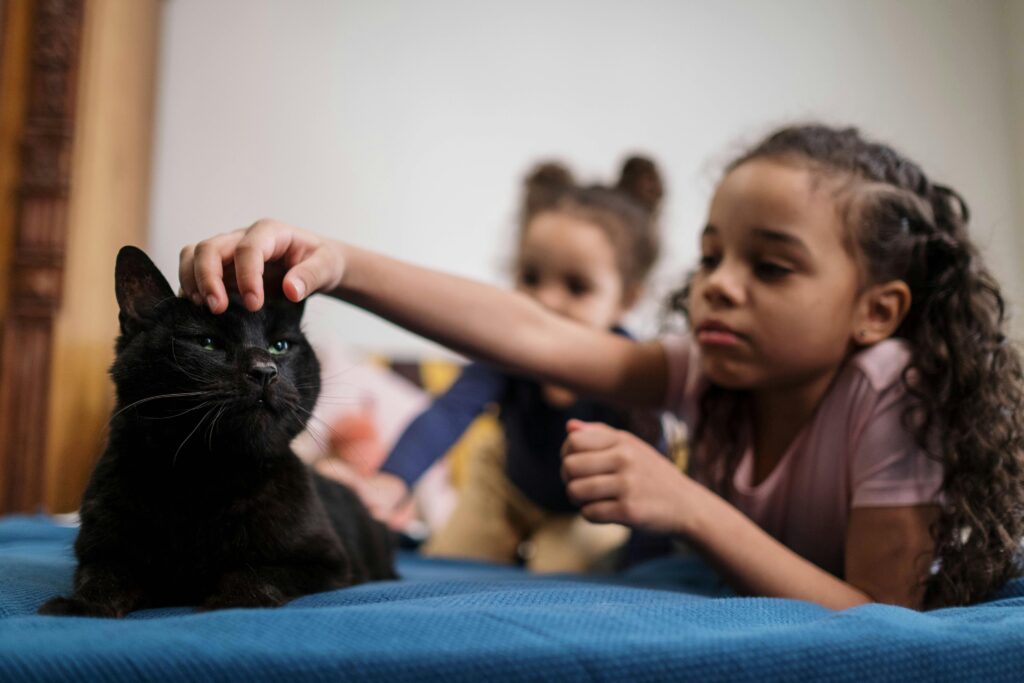
The death of a pet is often a child’s first experience with loss. Pets are more than animals; they are family members, companions, and sources of unconditional love. When a pet dies, children may feel confusion, sadness, or even guilt, and as a parent, guardian, or adult who works with children, you may be wondering how to best support them.
Supportive adults can provide the comfort and solace children seek, easing the pain and difficulty of loss. To help you learn best practices, we’ve compiled a list of tips and resources below so you can best help children transition to their new reality.
Tips for Talking to Children About Loss and Grief
Children grieve differently than adults and it’s important to be open and honest with them about the death of the pet. Here are some tips for starting the conversation:
- Be Honest
We do not recommend lying to children, as children will eventually learn the truth and lying can breed resentment and destroy trust between parent and child. We also recommend avoiding euphemisms like ‘went to sleep’ as this can cause confusion, fear, or anxiety. - Use Clear Language
Instead of lying or using euphemisms, gently explain that the animal’s body stopped working. Make sure the child understands what “dying” means and that death is a permanent state. It is important for the child to know that the pet has died and will not be coming back. - Acknowledge Their Feelings
Validate their sadness, anger, or confusion. Encourage your child to show his/her feelings by talking or writing about it. Assure the child that it is okay to express their feelings. - Encourage Remembrance
Help them create a memorial, draw pictures, or share favorite memories of their pet. Other ideas to encourage remembrance include creating a keepsake, holding a funeral, and writing a letter to the pet as a family. - Maintain Routine
Some children may want to withdraw from family and friends temporarily. As much as possible, try to keep their daily routine consistent. - Be a Role Model
Share your own feelings and show children that it’s okay to grieve. This tells the child that the pet was special and that they are not grieving alone. You can also encourage your child to open up, which can help the healing process.
Books for Helping Children Understand and Process Loss
Books can provide children with gentle language, relatable stories, and comforting imagery that help them understand grief and loss in a way that feels safe and accessible. For more family-friendly books on pet loss, death, and grief, read our blog on pet loss and grief support resources.
books
- The Rainbow Bridge: A Visit to Pet Paradise by Adrian Raeside
- When a Pet Dies by Fred Rogers
- I’ll Always Love You by Hans Wilhelm
Final Thoughts
It’s important to meet children where they are emotionally. Younger children may struggle to understand permanence, while older children and teens may grapple with more complex emotions, such as guilt or anger. Giving them safe outlets to express their grief — whether through journaling, drawing, or talking — can aid the healing process.
While most children will gradually adjust, some may struggle with ongoing intense emotions, behavioral changes, or signs of anxiety and depression. If grief significantly interferes with their daily life, parents or guardians may want to consider professional support such as counseling or therapy.
